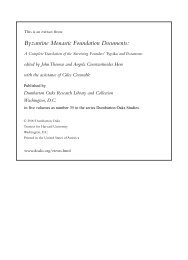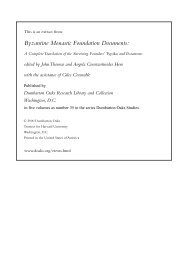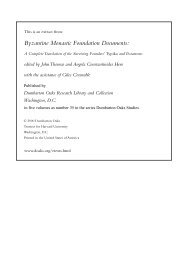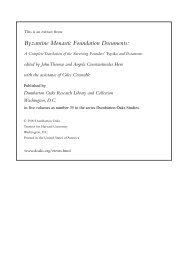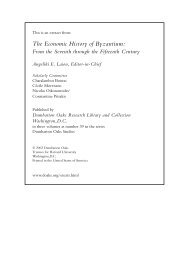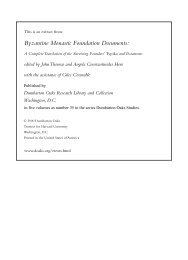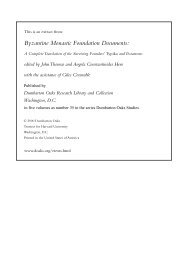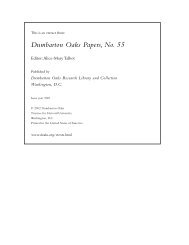Nature and Ideology: Natural Garden Design in ... - Dumbarton Oaks
Nature and Ideology: Natural Garden Design in ... - Dumbarton Oaks
Nature and Ideology: Natural Garden Design in ... - Dumbarton Oaks
Create successful ePaper yourself
Turn your PDF publications into a flip-book with our unique Google optimized e-Paper software.
“TEUTONIC” TRENDS<br />
25. Groundplan of the Grove of the<br />
Saxons (from R. Berkelmann,<br />
“Der Sachsenha<strong>in</strong> bei Verden<br />
a. d. Aller,” Gartenkunst 50<br />
[1937], 125)<br />
naturally a floodpla<strong>in</strong> for the nearby river Aller. The whole area has been shielded from the Aller<br />
by a dam but is, nevertheless, flooded time <strong>and</strong> aga<strong>in</strong>. One might <strong>in</strong>terpret this as emblematic of<br />
the fall of National Socialism; one has to <strong>in</strong>terpret it as an <strong>in</strong>dication of how l<strong>and</strong>scape architects<br />
consciously tried to create—aga<strong>in</strong>st natural conditions—“natural”-look<strong>in</strong>g l<strong>and</strong>scapes, then suggested<br />
they would be proof of the close-to-nature relation of the Germans, <strong>and</strong>, as was done for<br />
the Grove of the Saxons, stated that the whole site would have “developed out of the natural<br />
conditions.” 63<br />
The center of the Grove of the Saxons is the so-called small th<strong>in</strong>gstead (Fig. 26) with the two<br />
“leader’s pulpits” (Fig. 27), overshadowed by huge beech trees. In front of these pulpits a small<br />
rivulet, the Halsebach, flows to the river Aller. In the middle of this site is a council r<strong>in</strong>g, a<br />
campfire built of boulders. The rema<strong>in</strong><strong>in</strong>g large meadow was <strong>in</strong>tended to serve as a big th<strong>in</strong>gstead<br />
for special parades. At the north end of the oval are situated three farmhouses, which were moved<br />
from other parts of northern Germany to the Grove of the Saxons <strong>and</strong> rebuilt there <strong>in</strong> 1935.<br />
It has been shown above why the use of rocks <strong>and</strong> boulders, as George Mosse describes it <strong>in</strong><br />
his book Fallen Soldiers, “was thought especially apt as a monument, s<strong>in</strong>gled out as symbolic of<br />
63 Cf. R. Berkelmann, “Der Sachsenha<strong>in</strong> bei Verden a. d. Aller,” Gartenkunst 50 (1937), 128. There is noth<strong>in</strong>g<br />
wrong with the artificial creation of natural-look<strong>in</strong>g l<strong>and</strong>scapes; it only shows how manipulatively claims for an assumed<br />
close relationship of the German people to nature were used by German l<strong>and</strong>scape architects.<br />
213




